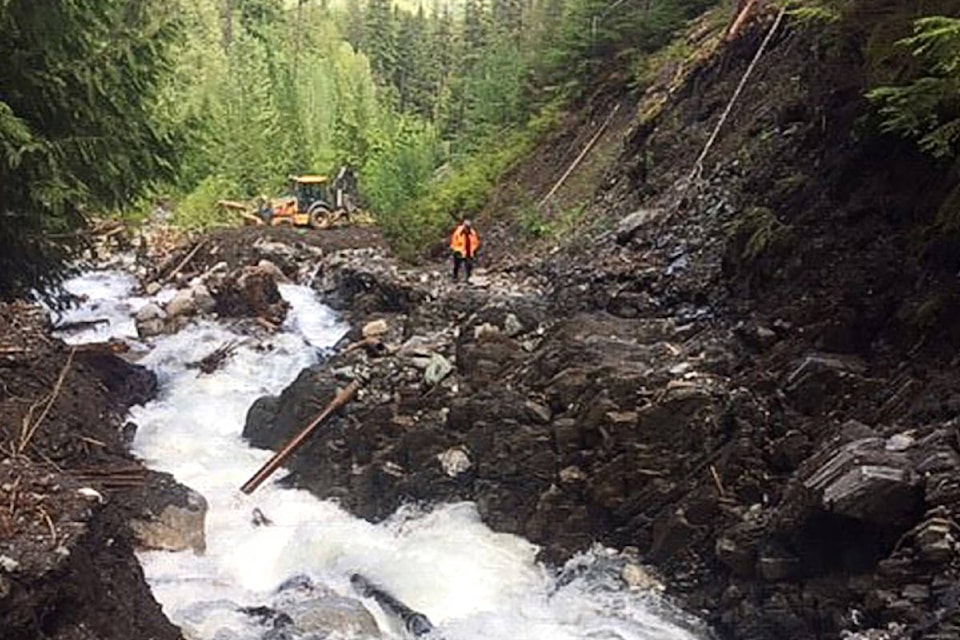By John Boivin, Local Journalism Initiative Reporter
Kaslo’s water crisis has been averted, but it could be months before the village’s water system is completely repaired.
“We’re operating on a temporary water intake, and the village crew were very efficient getting that up in the couple of days after the washout happened,” chief administrative officer Ian Dunlop said. “So we do have a stable water supply for the time being.”
The May 31-June 1 storm that dropped 55 mm of rain in the area washed out the road to Kaslo’s water intake and damaged much of the infrastructure. Even now the whole extent of the problem is unknown, as it’s too dangerous for engineers to enter the slide zone safely.
Right after the disaster, the village was operating on its reserves only and ordered Stage 4 water restrictions, the tightest limitations to water use.
Since then crews have re-established the water flow into the reservoir and stabilized the supply.
“Right now we’re meeting demand,” says Dunlop. “The temporary intake is providing enough volume, plus we have a couple of spring-fed water sources that feed into it as well. So with the spring weather and plenty of rain there’s no risk of anything drying out.”
Once the spring runoff is over, the Kaslo River will clear up and another source of water will be available for the system, he says.
“Once the Kaslo River clears up we will likely be switching over to our auxiliary water intake,” he says. “But right now because of the freshet, that’s not an option, as the river is too turbid.”
The village is now back on Stage 2 water restrictions, meaning residents can now water their gardens again.
But Dunlop says the repair work could take some time, as the disaster has the administration taking a hard look at the whole current intake system.
“We may also have to consider what alternative sources of water there are, because unfortunately there was a similar incident in 2012 in which we lost our dam, and we thought it had been taken care of. The new dam was built to withstand a washout, which it did — but unfortunately, it was the downstream road and pipeline that washed out.
“So we have to consider the long-term viability of that water source and that will be part of the studies that take place. And that’s why it’s going to take several months for us to get a final solution in place.”
Dunlop says the village has submitted $20,000 in claims for expenses in responding to the disaster. However, a complete restoration of the system could cost much more than that, depending on the final fate of the intake and dam.
He says the village has applied for disaster assistance funding from higher levels of government to help pay for the incident.
— From the Valley Voice
